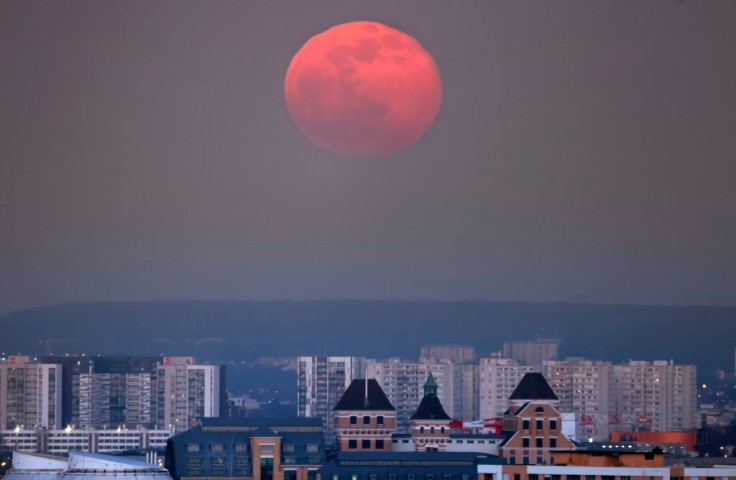On the night of May 15-16, May's full moon, also known as the "Flower Moon," will undergo an eclipse.
In which places can you see this phenomenon?

When Will May's Full Moon, Known As the 'Flower Moon', Undergo an Eclipse?
According to NASA, a full moon and a total lunar eclipse will occur on Sunday night into Monday morning, May 15 to 16, 2022, with the total eclipse peaking early on May 16.
On May 15, the Moon will enter the partial shadow of the Earth around 9:32 p.m. EDT, although the slight darkening will not be noticeable until the Moon enters the entire shadow of the Earth at 10:28 p.m. The Moon will not be completely covered by the whole shadow until 11:29 p.m.
The eclipse will reach its peak at 12:11 a.m. on May 16. At 12:54 a.m., the Moon will begin to emerge from its complete shadow and finish emerging from the full shadow at 1:55 a.m.
The Moon won't leave the partial shadow until 2:51 a.m., although the faint shading of the eclipse's last stages will be difficult to see.
Some Cities Where at Least Part of the Total Eclipse Is Visible
Time and Date compiled a list of places that can observe the 'Flower Moon,' which is shown below:
- Rome, Italy
- Brussels, Brussels, Belgium
- London, England, United Kingdom
- Paris, Île-de-France, France
- Havana, Cuba
- Johannesburg, South Africa
- Lagos, Lagos, Nigeria
- Madrid, Spain
- Santiago, Chile
- Washington DC, District of Columbia, USA
- New York, New York, USA
- Guatemala City, Guatemala
- Los Angeles, California, USA
- Rio de Janeiro, Rio de Janeiro, Brazil
- Chicago, Illinois, USA
- Mexico City, Ciudad de México, Mexico
- Detroit, Michigan, USA
- San Francisco, California, USA
- Buenos Aires, Argentina
- Lisbon, Lisbon, Portugal
Some Cities Where Partial Eclipse Is Visible
The History of the Name 'Flower Moon'
As per the report of Space.com, The word "flower moon" refers to the flowers that emerge in North America around May's full moon; Algonquin-speaking peoples in the northeastern region of the continent, such as the Ojibwe (or Anishinaabe), used a similar term (Waawaaskone Giizis, which means "flower moon" according to the Ontario Native Literacy Coalition).
What Exactly Is the Blood Moon Effect
Space.com also noted that the "blood moon" effect at totality is caused by the Earth's atmosphere. Standing on the moon, one would witness a total solar eclipse, with the Earth completely covering the sun.
The edge of the Earth, on the other hand, would appear vivid red-orange.
The sun's light is refracted and absorbed by the Earth's atmosphere. This means that sunlight bends around the Earth in the same way as it does in a lens.
The Earth's atmosphere also absorbs and scatters shorter wavelengths in the blue and green sections of the spectrum, resulting in mainly reddish light reaching the moon.
Because the moon is dimmed during an eclipse, it is easier to view the constellations it is in - in this case, Libra, which is usually drowned out by the full moon's light.
Related Article : James Webb Space Telescope Reveals Phenomenal Image of Stars









